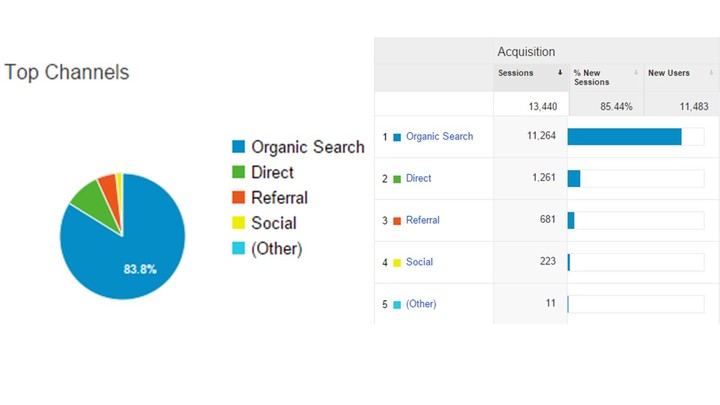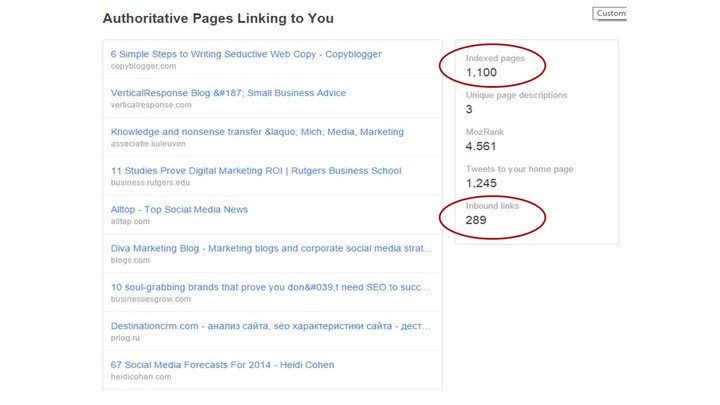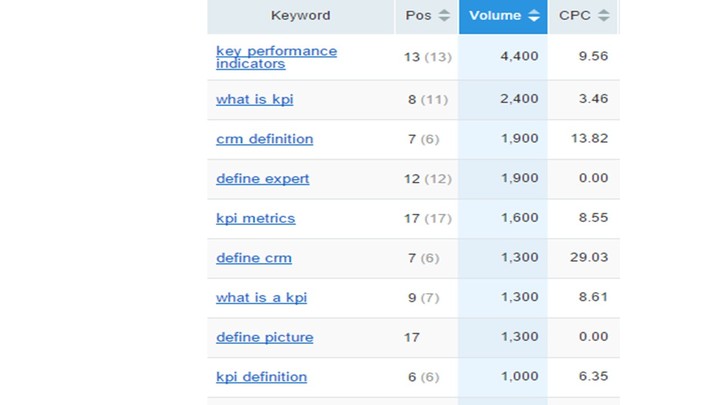- 64% of traffic to a website comes from Organic Search (source: Conductor)
- $750/month to $8,000/month is the range for retainers companies pay for SEO (source: Search Engine Watch)
- $100/hour to $300/hour is the range on an hourly basis
Search Engine Optimization (SEO) is the process of getting traffic from the “free,” “organic,” “editorial” or “natural” search results on search engines.
These facts show:
- An understanding of Organic Search is necessary for businesses to succeed on the internet
- Search Engine Optimization (SEO) is big business and costs vary widely
- SEO should be tracked and measured to know its return on investment (ROI)..
With 5 data-driven metrics, you can prove the ROI of SEO. We’ll show you based on the SEO we do for our company, BarnRaisers.
- WEBSITE VISITS FROM ORGANIC SEARCH: SEO that works drives more visitors to a website. For our business, we know 83% of traffic comes from organic search (more than average). We know it attracts over 11,000+ visits/month and over 85% are new. We get this information from Google Analytics. We work at SEO largely by providing relevant content (like this blog) to our visitors using priority “keywords” (metric #4). We track it every month.
- LINKS: When search engines crawl your site, they look to see if you are an “authority.” This is determined by other sites that refer visitors through “inbound links.” If you’re providing relevant content on a regular basis, “authoritative links” should increase and the search engine raise your rank. We know we have 289 inbound links. We monitor them regularly and watch where they come from. Guest blog posts have served us well from increasing our inbound and authoritative links. There are many services that track links. These are tracked from Marketing.Grader.
- INDEXED PAGES: Search engine catalog search pages for every query a user makes. The number of search engine pages your website is cataloged on are your “indexed pages.” More is better than less and, if your SEO is working, indexed pages increase. From the same source above, we have 1,100 indexed pages and are glad it has grown and continue to grow.
- KEYWORD RANK: 32.5% of people click on the website in the first position in Organic Search from their search query; 90% click on a listing from the first page (source: Chitika). Understanding what keywords your business ranks high and how they match with what you do in very important. In our case, we achieve first page rank for keywords that reflect analytic expertise like “Key Performance Indicators,” “kpis” and “crm.” Since this is what we do, we’re glad about it. We also see how must value our efforts in Organic Search provide compared to paying for these keyworks on a CPC (cost-per-click) basis. The figures below come from SEMRush.
- KEY TRANSACTION ACTIVITIES (CONVERSIONS): People like to do business with people they know, If you like what you’ve read, you can: 1) Subscribe to our newsletter, 2) Download our free eBook, 3) Buy a book we’ve helped author or 4) View our process for working on SlideShare. We track all these activities and know a certain percentage of people who do their activities become customers. We also know what percent come from Organic Search because we’ve set up “goals” in Google Analytics. Through all these measures, we are able to determine if and how our efforts in SEO generate ROI.
If you need more information on the cost of SEO, below in an infographic.
Do these 5 metrics prove the ROI of SEO to you? Did it help to show you how to measure SEO based on what we do? Does your business need help with SEO?










